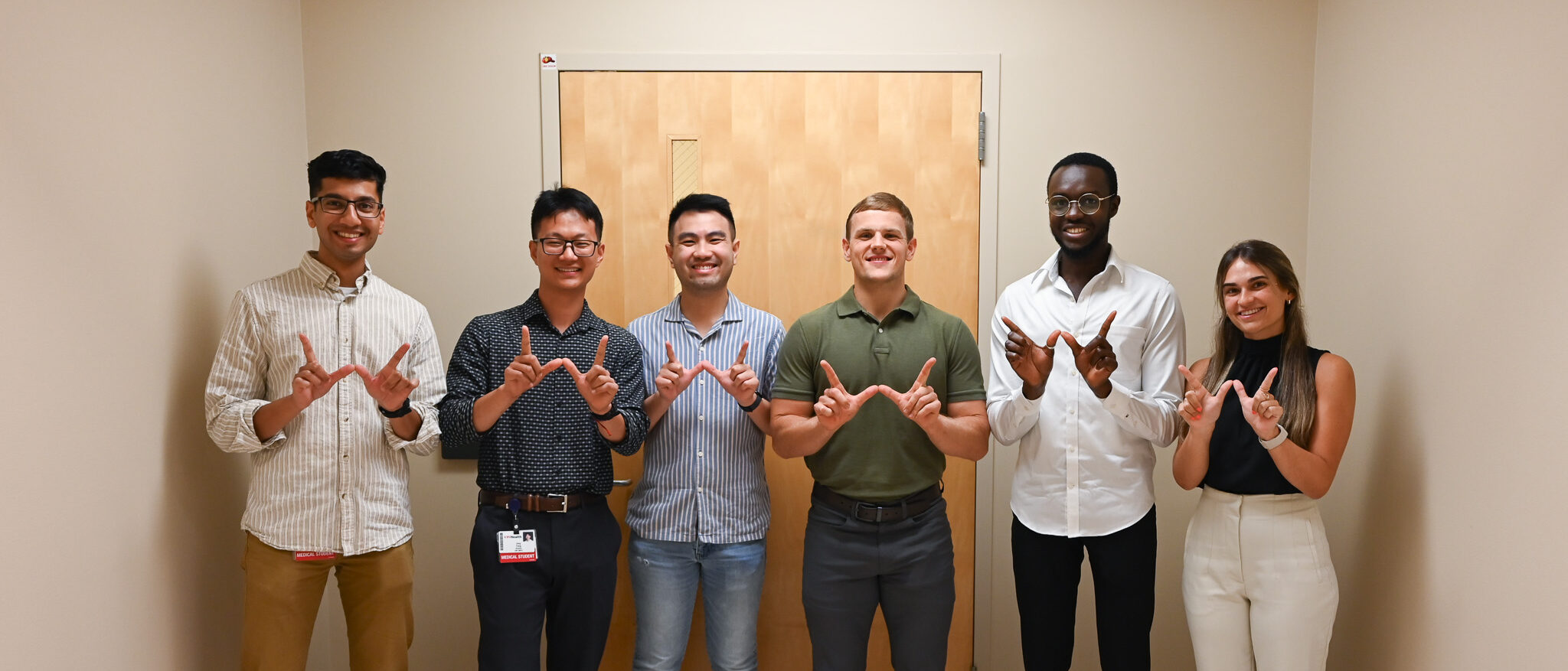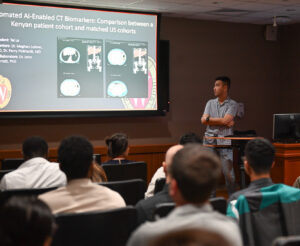
This summer, seven dedicated medical students explored research opportunities with the UW Department of Radiology through the Shapiro Summer Research Program and the Radiology Equity Program.
The Shapiro Program is part of a broader research initiative from the UW School of Medicine and Public Health, while the Radiology Equity Program is unique to the department. Both programs follow a similar structure: students work closely with a radiology faculty mentor, participate in clinical shadowing opportunities, and attend seminars that offer insight into the day-to-day life as a radiologist.

Meghan Lubner, MD has participated as a Shapiro mentor nearly every summer for the past decade. “It’s a nice way to expose students to radiology outside of the reading room” she explained. “When they’re on rotation, it can be difficult to showcase the field in all its glory. By conducting research, they can think more clinically, see the tools, and understand the data that we can extract beyond what we’re looking for to make a diagnosis in the reading room.”
This summer, Tai Le worked with Dr. Lubner and Perry Pickhardt, MD on a project focusing on opportunistic screening using body composition biomarkers extracted from abdominal CT scans by AI-tools. Specifically, he compared a Kenyan patient cohort and matched US African American and white American cohorts to understand how body composition biomarkers vary with race and geographic location.
Le echoed Dr. Lubner’s sentiments on the program’s benefits. “The clinical shadowing sessions dispelled a lot of the myths about the specialty for me. A common misperception is radiologists grind cases in a dark room all day without any human interactions. On ultrasound, I saw a mix of cool procedures like ultrasound-guided biopsy and paracentesis. And yes, bedside manners are still important to help patients feel comfortable during the procedures.” He noted that his experience with the program enhanced his understanding of the field and sparked interest in radiology as a potential career path.
Le also highlighted the positive atmosphere created within the department. “In the reading room, there was a lot of camaraderie between the residents and faculty radiologists. They worked as a team to manage the reading list and shared interesting cases with each other.”
2025 Summer Research Students:
- Kiara Didriksen, mentored by Anand Narayan, MD, PhD: Transparency and Bias in AI-Enabled FDA Products in Radiology: A Scoping Review
- Adam Ghouse, mentored by Erica Knavel Koepsel, MD: Impact of Prostate Cryoablation on Urinary and Sexual function
- Muhaison Ibrahim, mentored by Aaron Eifler, MD: Prostatic Artery Embolization prior to Holmium Laser Enucleation does not impair procedural efficiency in extremely large glands
- Tai Le, mentored by Meghan Lubner, MD and Perry Pickhardt, MD: Automated AI-Enabled CT Biomarkers: Comparison between a Kenyan patient cohort and matched US cohorts
- Zamzam Nur, mentored by Pallavi Tiwari, PhD: Associations of Novel Vascular Risk Factors and Co-morbidities With Onset of First Ischemic Stroke
- Brent Robley, mentored by Ryan Woods, MD, MPH: EHR Utilization by Breast vs. Non-Breast Radiologists
- Joey Yang, mentored by Pallavi Tiwari, PhD: Prediction of cognitive impairment post ischemic stroke using structural deformation radiomic features and machine learning